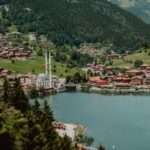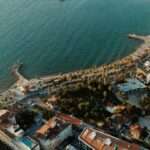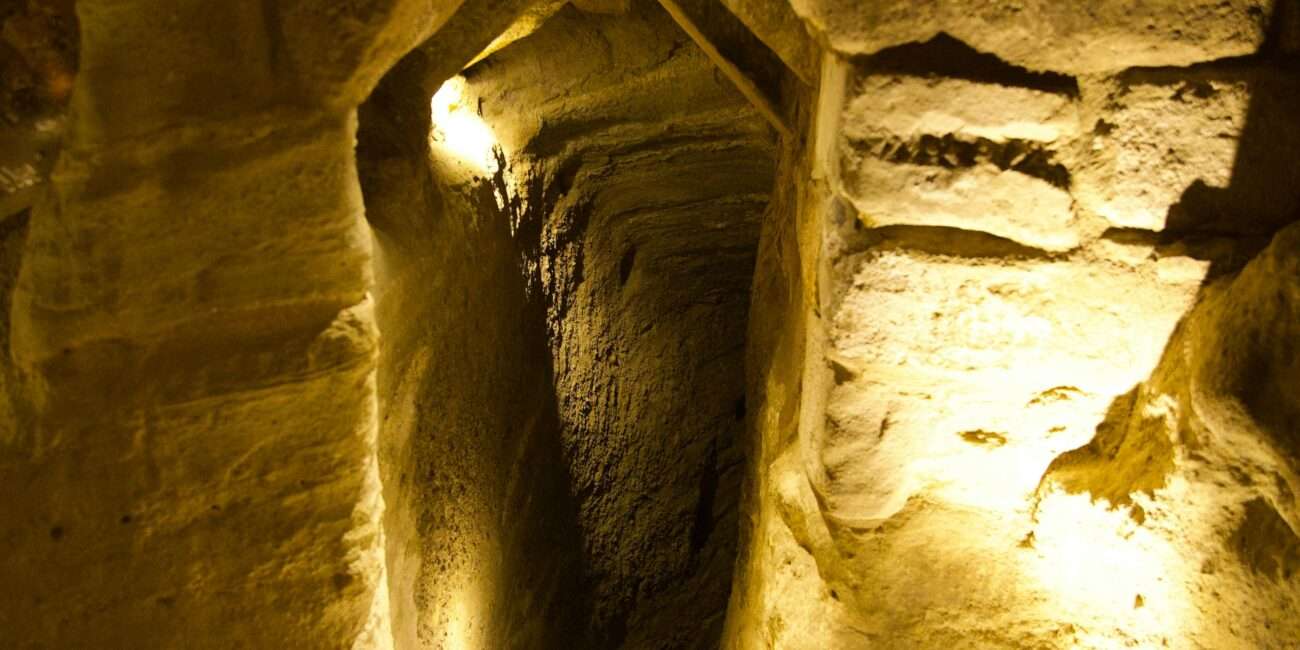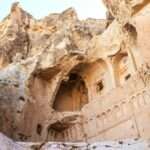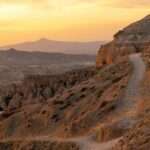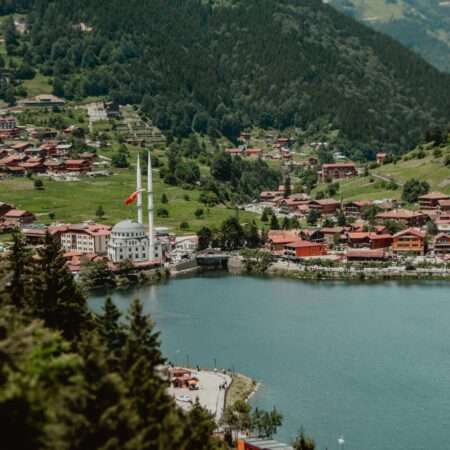Beneath Cappadocia’s breathtaking landscapes lie mysterious underground cities — vast subterranean networks built centuries ago for protection and survival. Derinkuyu and Kaymaklı are the most famous, offering labyrinthine tunnels, hidden rooms, and fascinating history. In this 2025 guide, we’ll explore these remarkable cities, what to expect during your visit, and tips for navigating their depths safely and respectfully.
In this 2025 guide, we’ll take you through the most famous underground cities in Cappadocia, explain why they were built, what you can expect when visiting, how to get there, and which one is best for your itinerary.
🧭 What Are the Underground Cities of Cappadocia?
The underground cities (known locally as “Yeraltı Şehirleri”) are a network of subterranean settlements carved into the soft volcanic rock of Central Anatolia. Some go as deep as 85 meters, with up to 18 levels underground.
They were primarily used as refuges during times of invasion and war—especially by early Christians escaping Roman, Arab, and Mongol attacks.
These cities included:
- Sleeping quarters
- Kitchens and wineries
- Churches and chapels
- Livestock stables
- Wells and water storage
- Advanced ventilation shafts
- Rolling stone doors for defense
Today, only a handful are open to the public, but each offers a unique glimpse into the ingenious underground life of Cappadocia’s past.
🏛️ Most Famous Underground Cities in Cappadocia
1. Derinkuyu Underground City
📍 Location: 40 km south of Göreme
Depth: Approx. 60 meters
Levels: 8 open to visitors (out of 18 total)
Ticket Price (2025): 300₺ (included in Museum Pass)
Derinkuyu is the largest and deepest excavated underground city in Türkiye. It could house up to 20,000 people, along with animals and food supplies.
Highlights:
- A missionary school with arched ceilings
- A baptismal chapel carved into stone
- Giant rolling stone doors
- A 55-meter deep ventilation shaft doubling as a well
Tips:
- The tunnels are narrow and steep—best avoided if claustrophobic
- Hire a guide for the historical context
⏱️ Best time to visit: Early morning to avoid crowds
2. Kaymaklı Underground City
📍 Location: 20 km south of Nevşehir
Depth: Approx. 40 meters
Levels: 4 open to visitors (out of 8)
Ticket Price (2025): 250₺
Kaymaklı is more spacious and horizontal than Derinkuyu, with wide corridors and large rooms.
Highlights:
- Ancient wine and oil presses
- Stone doors and security passages
- Livestock stables and kitchens
- Low, rounded ceilings typical of early dwellings
Comparison with Derinkuyu:
- Easier to navigate for families
- Less vertical, more accessible
3. Mazı Underground City
📍 Location: 30 km southeast of Ürgüp
Depth: Approx. 25 meters
Levels: 4 (partially excavated)
Ticket Price: 200₺
Smaller and less crowded than the others, Mazı is ideal for off-the-beaten-path travelers.
Highlights:
- Hidden chapel with original frescoes
- Unique entrance with stone sliding door
- Livestock pens carved into rock
Great if you want a quieter, more personal experience.
4. Özkonak Underground City
📍 Location: 14 km northeast of Avanos
Depth: Approx. 40 meters
Levels: 4 open
Ticket Price: 150₺
Discovered in 1972, Özkonak has unique communication tunnels and air shafts that allow for inter-level speaking.
Highlights:
- Booby trap holes for defense
- Long corridors and meeting rooms
- Interactive displays for visitors
Best for families and those staying near Avanos.
5. Tatlarin Underground City
📍 Location: Near Acıgöl (20 km from Nevşehir)
Depth: Approx. 20 meters
Ticket Price: 120₺
Still being excavated, Tatlarin is a relatively new discovery but shows promise with its well-preserved frescoes and unique architecture.
⛏️ Why Were These Cities Built?
The soft tuff rock of Cappadocia, created by ancient volcanic eruptions, made it easy to carve homes and shelters.
Underground cities were used for:
- Protection from invaders
- Religious freedom during Roman times
- Storage of food and wine
- Seasonal living (cool in summer, warm in winter)
They were designed with defense in mind: narrow tunnels to slow down enemies, stone doors that could only be opened from the inside, and hidden air shafts.
🚶 What’s It Like Inside?
Expect:
- Low ceilings and tight corridors
- Uneven, rocky floors
- Dim lighting
- Historical signage (in Turkish and English)
Safety Tips:
- Wear good walking shoes
- Bring a flashlight or headlamp
- Avoid if you’re severely claustrophobic
- Stick with your group—some tunnels are maze-like
📸 Photography Tips
- Photography is allowed, but no flash in sensitive areas
- Wide-angle lens is best for capturing tight corridors
- Use manual settings—lighting is dim
- Focus on texture: the rock walls, carved doors, and tools
🕰️ Best Time to Visit
- Spring and autumn (April–June, Sept–Nov): Best temperature
- Avoid July–August: Underground can still get crowded
- Weekdays: Less tour traffic
- Early morning: For Derinkuyu or Kaymaklı
🚗 How to Get There
From Göreme or Ürgüp:
- Car rental: Most convenient, roads are good
- Private tour: Best option for multiple cities in one day
- Minibus (Dolmuş): Budget-friendly but limited schedules
📌 Derinkuyu and Kaymaklı can easily be combined in one day trip
🧳 What to Bring
- Sturdy shoes
- Water bottle
- Light jacket (underground is cool even in summer)
- Camera with low-light settings
- Museum Pass Türkiye (optional, but useful)
💡 Insider Tips
- Go with a licensed guide—they share stories you won’t find on signs
- Claustrophobic? Choose Kaymaklı or Özkonak (wider tunnels)
- Short on time? Derinkuyu is the most iconic, Kaymaklı is the easiest
- Adventurous? Try Mazı or Tatlarin for fewer crowds
🍽️ Nearby Restaurants
- Somine Restaurant (Kaymaklı) – Authentic Turkish cuisine
- Gülşehir Sofrası (Near Derinkuyu) – Budget-friendly, hearty meals
- Seyyah Han (Avanos) – Great for those visiting Özkonak
🏨 Where to Stay Nearby
- Göreme: Best central location for exploring all underground cities
- Ürgüp: Close to Mazı and Kaymaklı
- Avanos: Good base for Özkonak
Check: Where to Stay in Cappadocia (2025 Guide)

